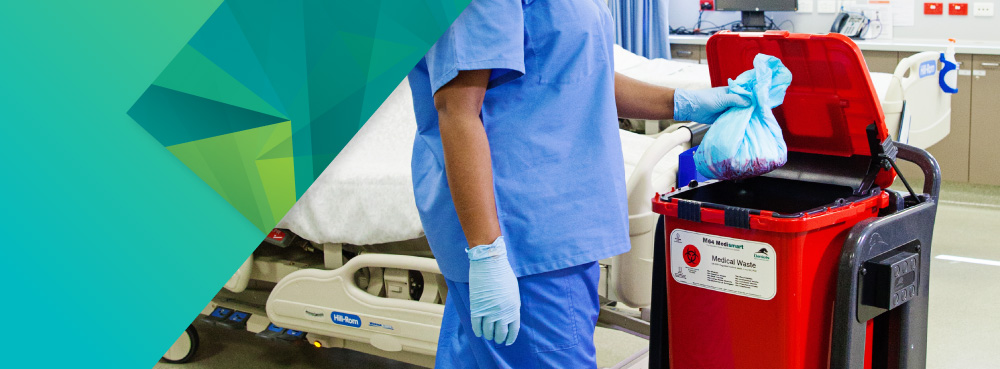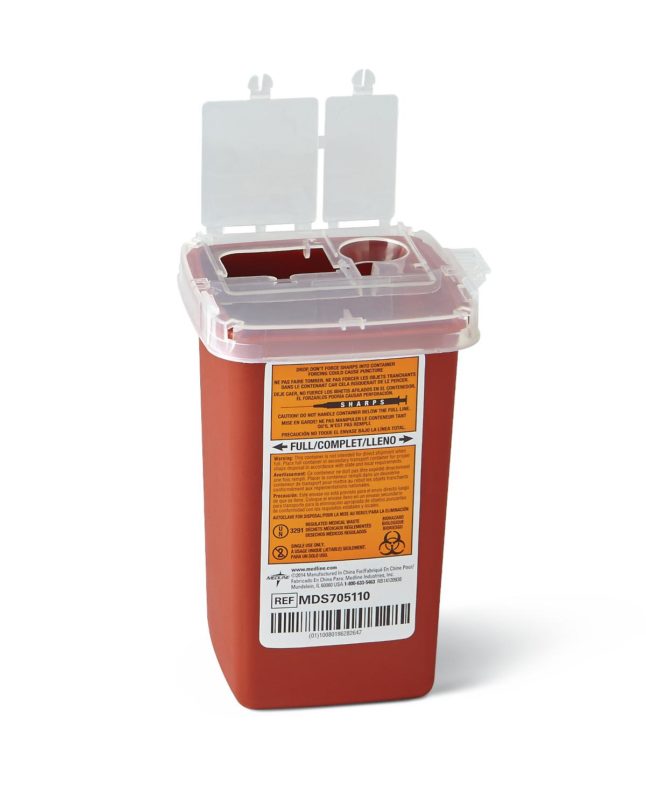Past Cleaning: Ensuring Safety with Professional Medical Waste Removal
Past Cleaning: Ensuring Safety with Professional Medical Waste Removal
Blog Article
Minimize Expenses and Make The Most Of Safety: Effective Medical Waste Disposal Techniques
Efficient clinical waste disposal techniques are essential for health care facilities to optimize and reduce expenses safety. By executing proper partition and classification, effective packaging and labeling, secure transport and handling, efficient treatment and disposal approaches, and compliance with governing guidelines, healthcare centers can guarantee the responsible and risk-free management of clinical waste.

Correct Segregation and Categorization
Proper segregation and categorization are vital elements of effective medical waste disposal techniques, making certain the safety of medical care workers, the public, and the setting - medical waste removal. medical waste disposal services with WasteX. By separating different kinds of clinical waste at the factor of generation, medical care centers can decrease the threat of cross-contamination and possible damage to individuals and environments
One of the key consider proper segregation is the identification and classification of clinical waste. This includes categorizing waste right into different teams, such as infectious, harmful, radioactive, or pharmaceutical waste. Each group requires details handling, storage, and disposal approaches to stop any kind of negative effects on human health and wellness and the setting.
Moreover, correct segregation additionally includes making use of color-coded containers and tags to plainly identify and set apart the various kinds of clinical waste. This aids health care workers and waste monitoring employees to quickly acknowledge and take care of the waste properly. For instance, red containers may be used for infectious waste, while yellow containers may be designated for contaminated materials.
Along with partition, correct categorization also includes the right product packaging and containment of medical waste. This makes sure that waste is firmly saved and transferred without posturing any kind of risks to individuals or the environment. Utilizing puncture-resistant and watertight containers, along with effectively securing and classifying them, aids to prevent any unintentional exposure or release of dangerous compounds.
Effective Product Packaging and Identifying
Effective packaging and labeling play a critical role in ensuring the safe and effective disposal of clinical waste. Correct product packaging is necessary to protect against leak, damage, or spillage during transportation and handling. It aids to decrease the threat of contamination and secures health care workers, waste management employees, and the setting from prospective risks.
Medical waste should be packaged in tough and watertight containers that are resistant to puncture and damage. These containers must be appropriately secured to avoid any leak. In addition, the packaging must have the ability to stand up to the problems of transport, consisting of temperature variants and harsh handling.
Labeling is just as crucial as it offers crucial details regarding the contents of the waste and any type of potential dangers connected with it. The tags ought to consist of the name of the health care center, the type of waste, and any special handling guidelines. Clear and standard labeling makes sure that waste management workers can easily determine and handle the waste properly.
Reliable packaging and labeling additionally aid in the appropriate partition and categorization of clinical waste. Clear labeling allows for easy identification of different waste streams, such as transmittable waste, sharps, or pharmaceutical waste. This helps in simplifying the disposal process and ensuring that the waste is treated or dealt with in conformity with governing guidelines.
Safe Transportation and Handling
Making certain the safe transportation and handling of clinical waste is of utmost importance in order to avoid any kind of potential health and environmental threats. Clinical waste, such as sharps, contaminated materials, and pharmaceutical waste, should be effectively packaged and handled to reduce the danger of direct exposure to unsafe substances and pathogens.
Carrying clinical waste calls for conformity with rigorous regulations and guidelines set by local authorities and environmental companies. These guidelines intend to secure the wellness and safety and security of employees entailed in waste management and prevent the release of dangerous materials into the environment.
To ensure secure transportation, medical waste needs to be put in puncture-resistant and watertight containers that are correctly sealed and identified. Additionally, it is crucial to make use of specific lorries furnished with suitable safety and security functions to transport clinical waste. medical waste disposal services with WasteX.
Taking care of medical waste likewise calls for correct training and adherence to safety procedures. Employees involved in the handling of medical waste ought to put on appropriate personal protective devices (PPE) such as masks, gloves, and gowns to decrease the threat of direct exposure. They should also comply with stringent health methods to stop the spread of infections and make certain the safe disposal of waste.
Effective Treatment and Disposal Methods
Implementing suitable treatment and disposal techniques is important in taking care of clinical waste efficiently and reducing prospective health and wellness and environmental dangers. Clinical waste, which consists of sharps, transmittable products, chemicals, and drugs, can present considerable dangers if not dealt with and thrown away appropriately. There are a number of treatment and disposal methods available that follow governing standards and promote safe techniques.
One common method is incineration, which involves shedding the waste at high temperatures. Incineration works in ruining microorganisms and lowering the quantity of waste, yet it can launch unsafe pollutants right into the air otherwise effectively regulated. It is vital to make use of contemporary incinerators geared you could try here up with emission control technologies.
An additional approach is autoclaving, which utilizes heavy steam and pressure to sterilize the waste. Autoclaving works in eliminating microorganisms and decreasing the volume of waste, but it calls for cautious tracking and maintenance to make certain appropriate functioning. The sanitized waste can after that be safely dealt with in a landfill.
Chemical therapy is one more option, which entails utilizing disinfectants or various other chemicals to reduce the effects of pathogens. This approach is typically used for fluid waste, such as lab samplings. It is crucial to use ideal chemicals and follow correct procedures to make sure effective therapy and prevent ecological contamination.

Conformity With Regulatory Guidelines
Abiding by governing guidelines is crucial in guaranteeing correct compliance with medical waste disposal services with WasteX medical garbage disposal practices. These guidelines are placed in place to safeguard public wellness, prevent ecological contamination, and keep work environment safety and security. Conformity with regulatory guidelines is critical for healthcare facilities, as non-compliance can lead to fines, fines, and reputational damage.
Regulative standards lay out the proper handling, storage, transportation, and disposal of clinical waste. They give specific directions on packaging demands, labeling, and record-keeping. These standards additionally address the segregation of different waste streams, such as sharps, contagious waste, and pharmaceutical waste. Health care centers need to make certain that their waste management practices align with these guidelines to reduce the danger of exposure to harmful products and stop the spread of infections.
To preserve compliance, healthcare facilities should establish comprehensive waste management programs more helpful hints that consist of team training, routine audits, and continuous tracking. It is necessary to keep up-to-date with any updates or adjustments to governing standards, as methods may advance with time. By remaining notified and implementing proper methods, health care facilities can lower the possibility for regulative violations and shield the wellness and security of their staff, people, and the surrounding community.
Verdict
To conclude, executing effective clinical garbage disposal techniques is important for lessening costs and making the most of security. Appropriate partition and categorization, reliable packaging and labeling, secure transportation and handling, and reliable treatment and disposal approaches are vital actions to make sure conformity with regulative standards. medical waste removal near me. By adhering to these methods, healthcare centers can secure the environment and public wellness while likewise lowering financial problems connected with medical waste monitoring
By implementing appropriate partition and classification, efficient packaging and labeling, secure transport and handling, effective treatment and disposal techniques, and conformity with regulatory guidelines, health care centers can make certain the accountable and secure monitoring of medical waste. Red containers may be utilized for contagious waste, while yellow containers might be marked for unsafe waste.
Clear and standardized labeling guarantees that waste administration employees can conveniently recognize and handle the waste appropriately. (medical waste disposal services with WasteX)
Clear labeling enables for easy identification of various waste streams, such as contagious waste, sharps, or pharmaceutical waste. These guidelines also resolve the segregation of different waste streams, such as sharps, transmittable waste, and pharmaceutical waste.
Report this page